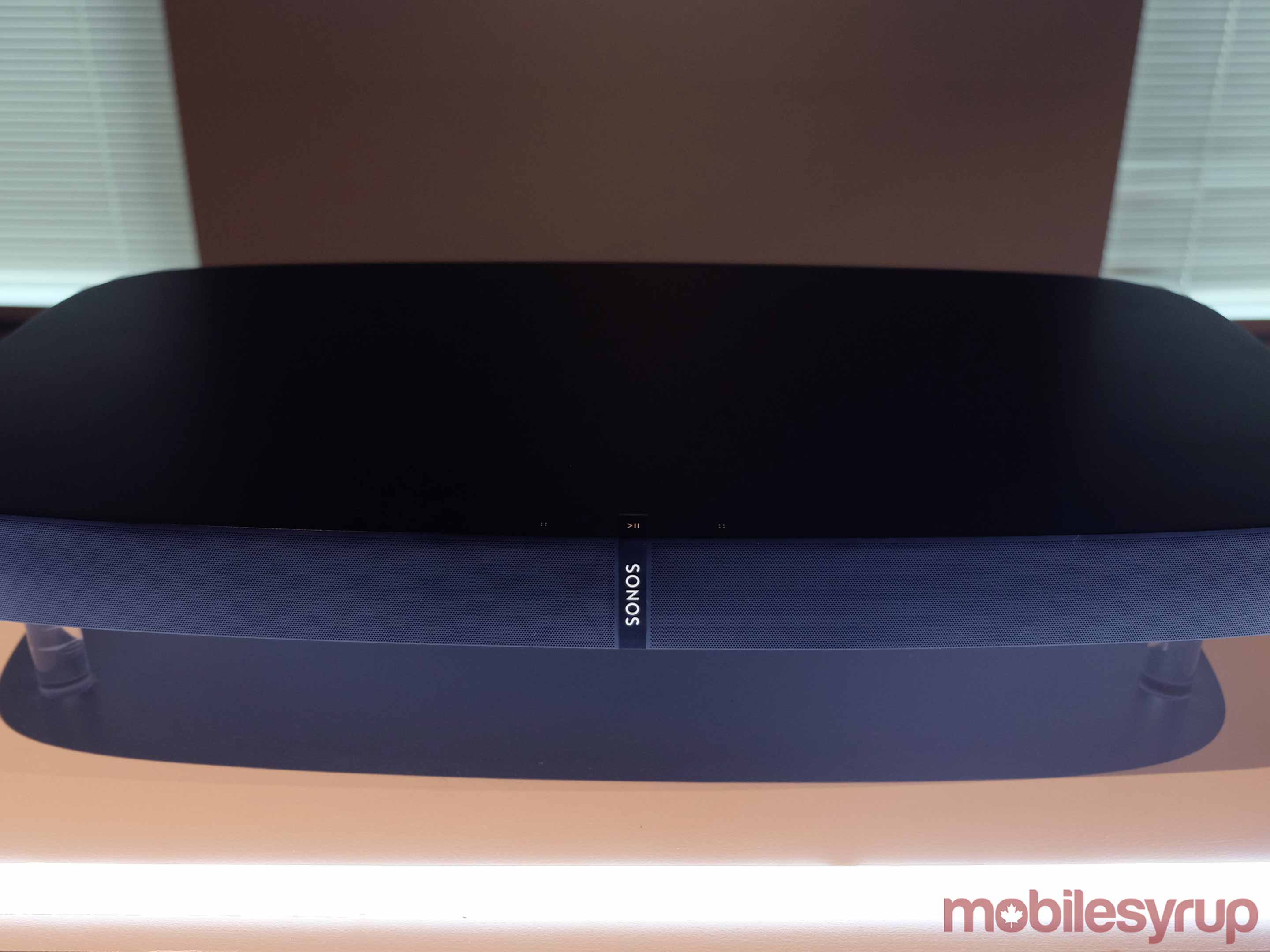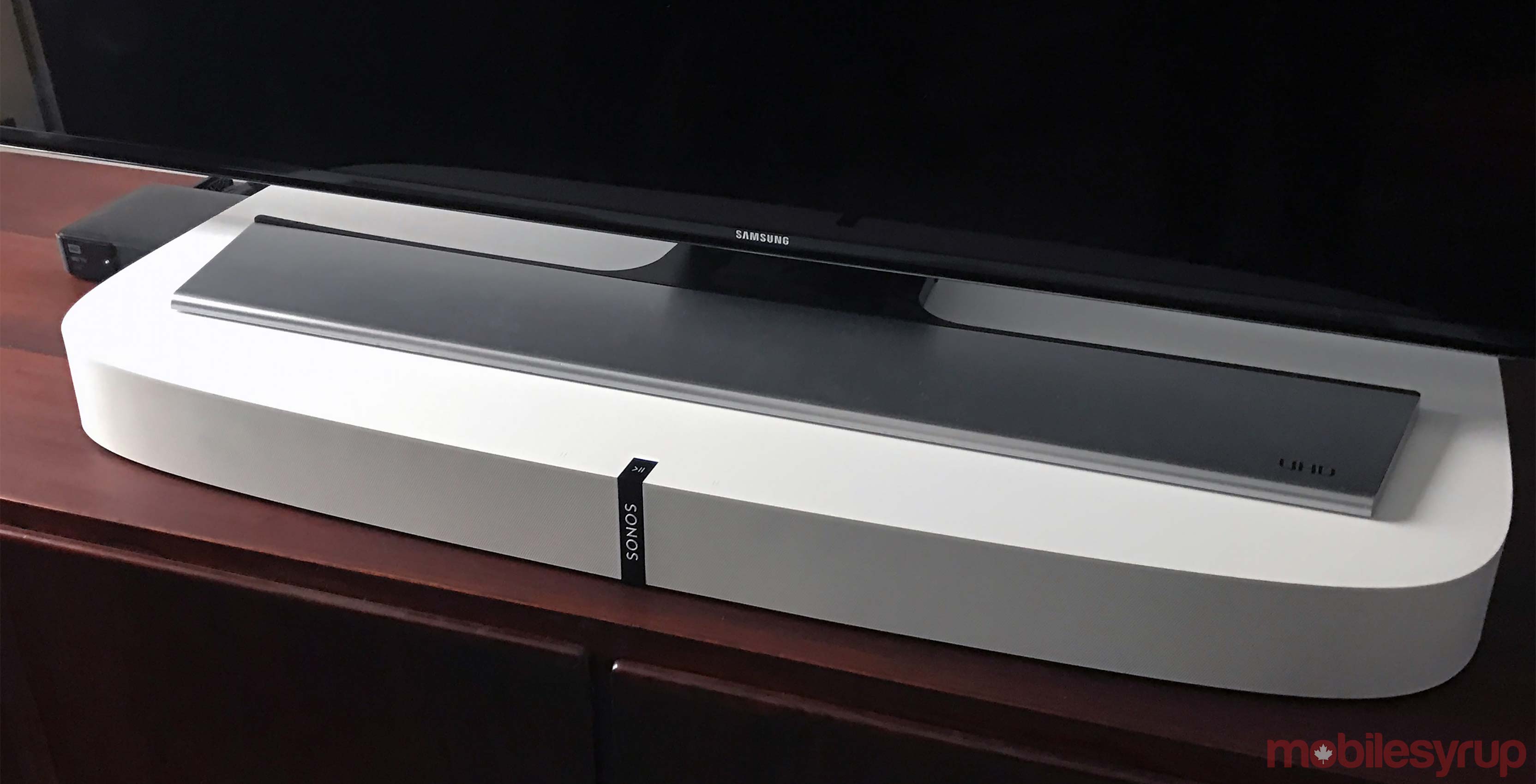
Sonos wants the real estate under your TV — literally. After trying its hand a few years ago with the Playbar, the audio stalwart is now adding another form factor to lie under your flat-panel with the Playbase.
The Playbase is a departure from just about anything Sonos has built to date. Its flattened form factor is the thinnest speaker the company has produced, measuring 2.3-inches thick, and spreading out 28-inches wide and 17-inches deep.
Designed to handle up to 75 pounds of weight on top of it, the Playbase should be perfectly fine underneath most TVs with regular stands. It may even nestle under nicely for larger models that use wider leg stands. Or you could always mount the TV on the wall and leave the Playbase on top of the entertainment unit sitting in front.
Sonos outlined all of these scenarios in a hands-on with the product at its offices in Boston where much of the hardware development took place.
Laying it down
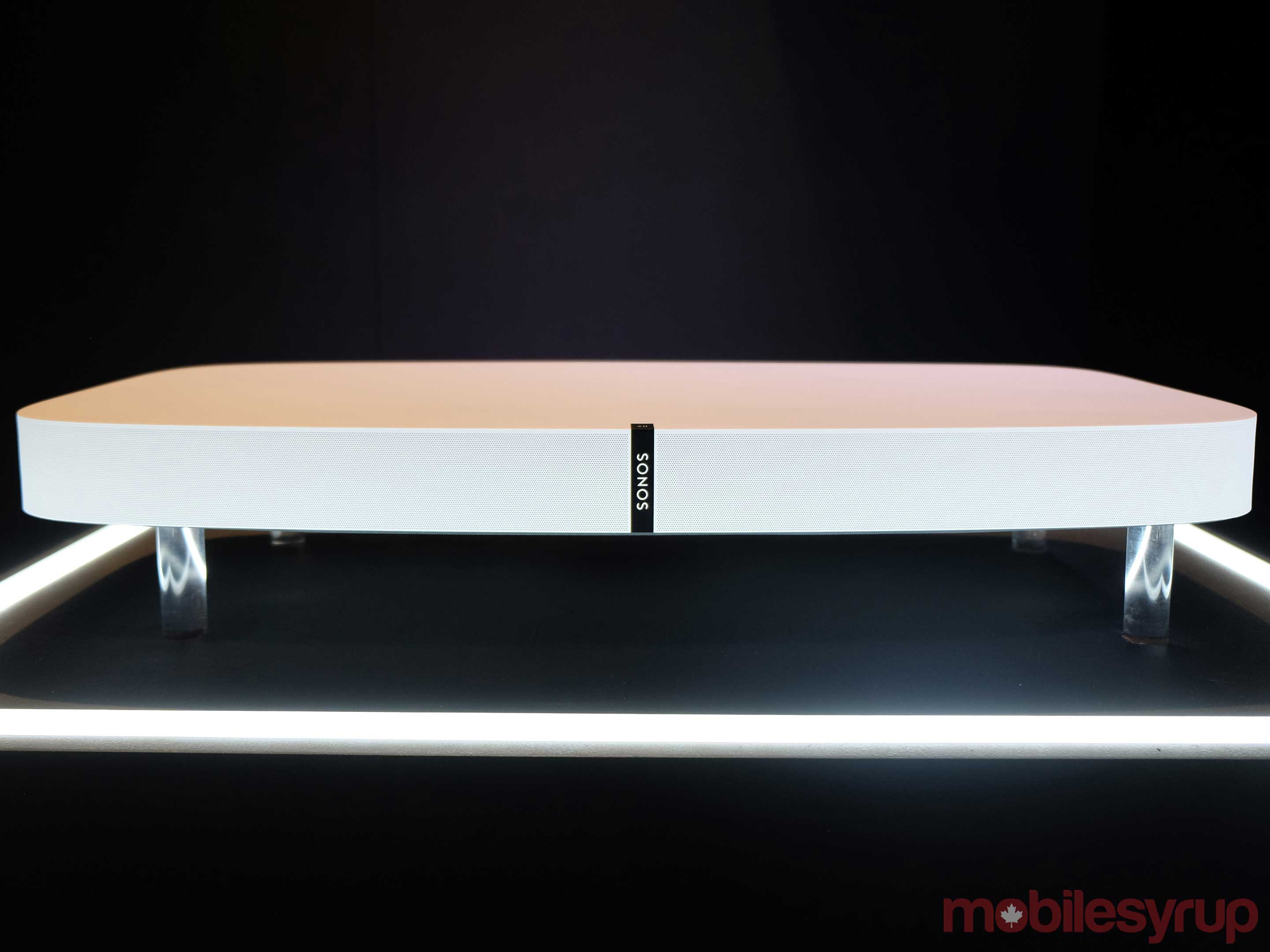
While it would be reasonable to assume the Playbase is going to replace the Playbar, Sonos has no intention of cannibalizing itself. The company intends to keep selling its sound bar for the foreseeable future, suggesting there is still a market for that form factor.
Sonos cites its own research noting 70 percent of TVs in people’s homes aren’t wall-mounted, so engineers figured it would be best to make something that can lay flat. A tall order to build a booming speaker in such an unusual build, but that’s essentially what the Playbase is.
What’s different between the two beyond form factor? Bass response sounded punchier on the Playbase, especially without the Sonos Sub involved — a point Sonos engineers didn’t dispute. There are technical reasons that involve airflow and the internal subwoofer, but outside of that, there isn’t supposed to be a big audible difference between them otherwise. The same Dialogue Enhancement and Night Mode features introduced in the Playbar will also be available here.
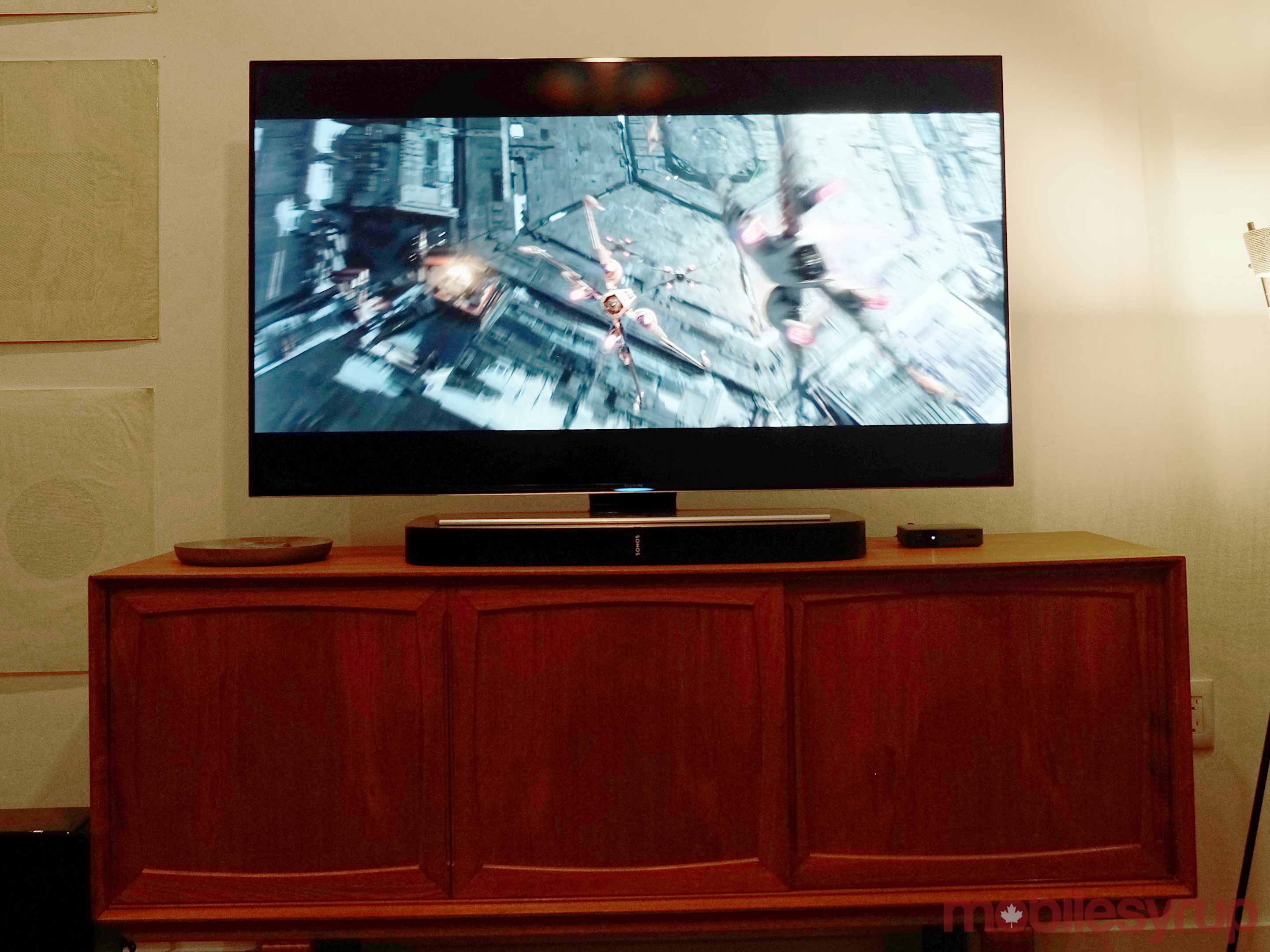
The grill in front that also slightly flanks the sides has 43,000 holes drilled in five different sizes, with the larger ones positioned towards the subwoofer and ventilation on the sides. The back only has three ports — power, optical audio (Toslink) and Ethernet. It supports Wi-Fi like every other Sonos speaker and can be grouped with others to spread out playback into other rooms. Basic touch-enabled playback controls on the top have also carried over from the Play:5
Not surprisingly, the Playbase will come in black and white versions, maintaining the binary design choices inherent in the company’s speakers.
Under the hood
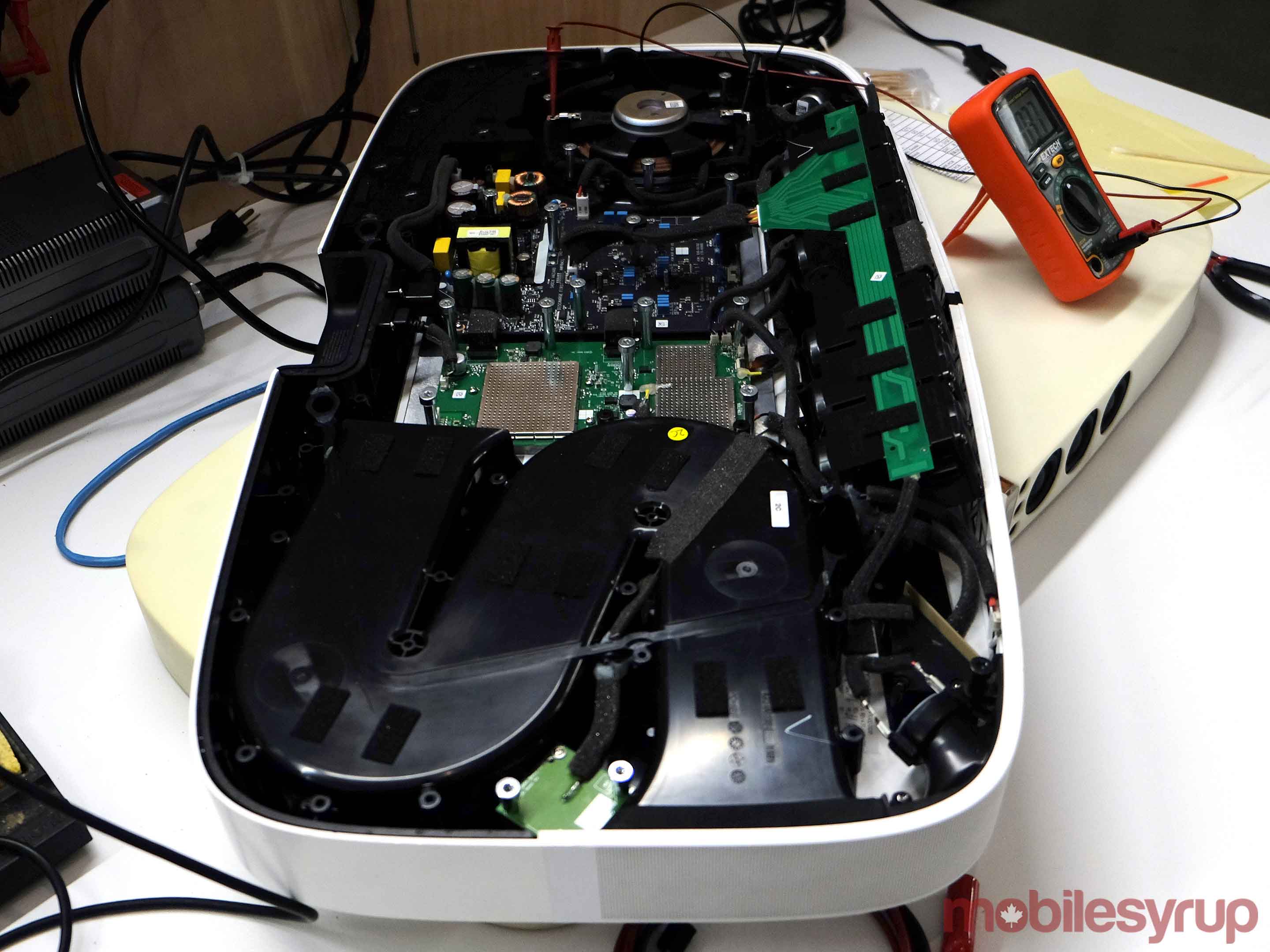
From a technical perspective, the guts of the Playbase are made up of ten Class-D digital amplifiers, broken down into six mid-range, three tweeters and one woofer. The polycarbonate body is sturdy enough to not only handle the weight of a TV on top of it, but to also avoid vibrations that might distort the sound.
It weighs under 9kg (19lb) on its own, so it’s got a little heft but is by no means heavy. By comparison, the Playbar is lighter at 4.9kb (11lb), though protrudes laterally a further 17cm (7-inches).
As noted, it can connect wirelessly to a Sonos Sub, as well as two paired stereo speakers for 5.1-surround. They would need to be Sonos speakers, of course, and ideally Play:1s. You can do it with Play:3s or Play:5s, but one of the audio engineers suggested that might be “overkill” for most living rooms or basements.
The lack of HDMI could be vexing for some hoping to have more pass-through options. For example, not every TV or streaming set-top box may work seamlessly with the surround sound setup. Sonos experts on hand were a little evasive, saying that it would work fine in most circumstances, but only further testing would bear that out.
Sonos had previously announced the dormant microphones on the Play:5 would finally get some use by integrating Amazon’s Alexa voice assistant into the company’s system in 2017. It wasn’t available to test hands-on, but the demo worked reasonably well. That will happen before the end of the year, except there is no exclusivity agreement.
Other platforms, like Siri, Google Assistant and Cortana could also be technically integrated. Sonos CEO Patrick Spence was mum on whether users can expect something to happen with another provider in the same timeframe.
This is a good thing because the lack of an Aux-In port negates the possibility of plugging in an Amazon Echo or Echo Dot and have Alexa commands run through it. The Play:5 has that port, and having paired the two products myself, I’ve seen how good they can be together. Offering this more seamlessly in a wireless setup should bode well whenever the Echo and Echo Dot become widely available in Canada.
Audio quality

I mentioned the punchier bass coming out of the Playbase. It’s no substitute for the extra rumbling Sonos’ Sub can tack on, but the resonance was palpable in the listening sessions I was exposed to. Hearing it in an acoustically balanced room or in someone’s Boston home, as I had the chance to do, performance was superb all around.
There was a crispness to the highs and mids that was easy to like, with stereo separation that enveloped a room better than I would have expected from such a flat design. Given I was among other journalists’ with varying musical tastes, I listened to tunes from different genres over the course of a day and a half. Be it hip hop, rock, jazz, pop, soul, house or classical, results were pretty consistent throughout.
TV and movie footage also came through very well. Dialogue was clear, with background music and sound effects nicely balanced. One scene from Spectre, where a collapsing building almost crushes James Bond, sounded especially good. Another from Star Wars: The Force Awakens showing an aerial attack on an enemy base was more frantic, yet very clear.
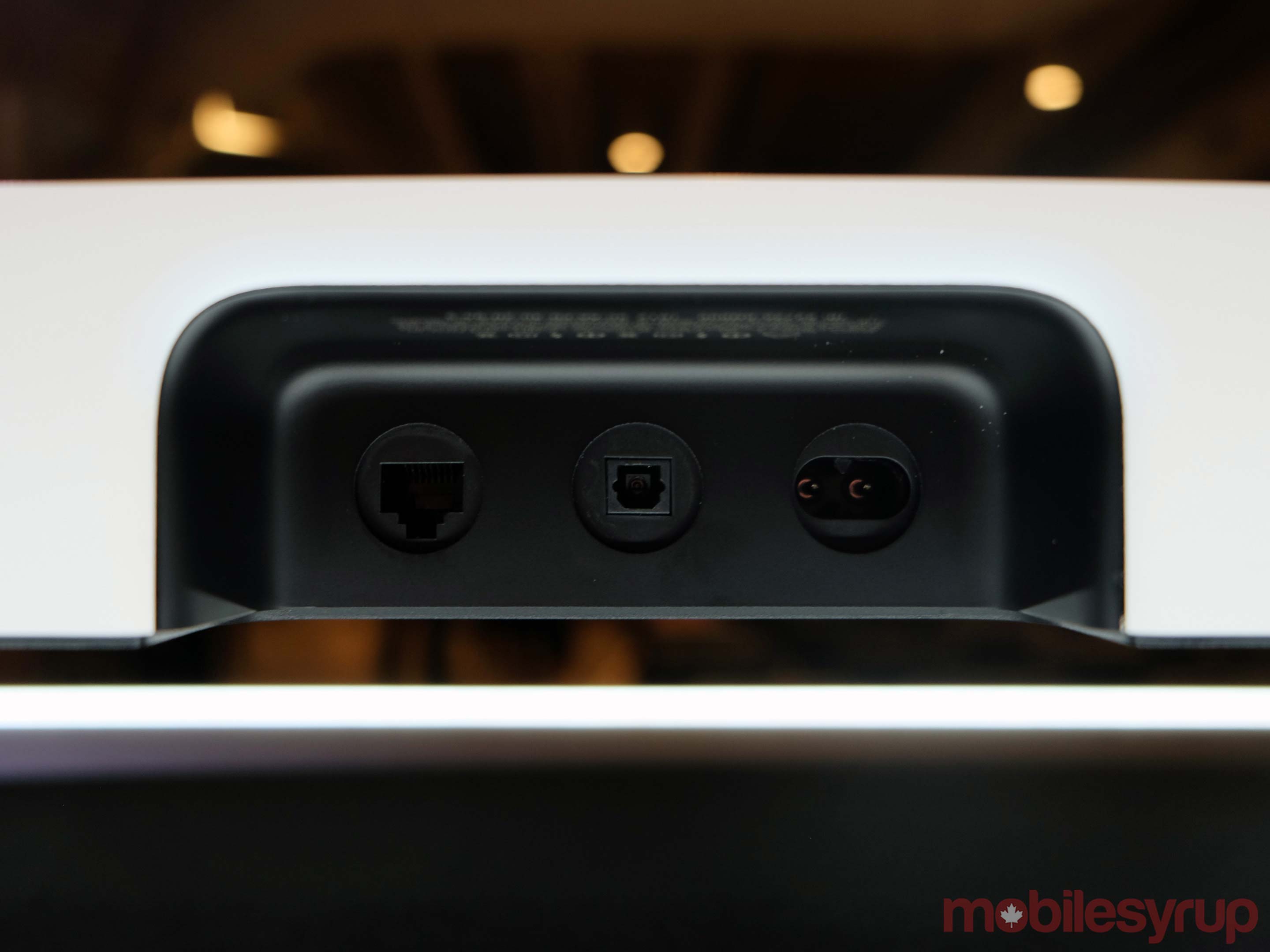
Plus, it can get loud — louder than I thought it could. Distortion wasn’t prevalent, but like any speaker, even the Playbase will have a tipping point. The good news is that it appears unlikely you would reach it in most scenarios.
Trueplay, Sonos’ software-based audio calibration tool to improve fidelity in whatever room it’s in, was on in most cases, but not all, so as to demonstrate the difference. Trueplay has been out for a while, and was recently added to the Playbar. Part of what makes this all work is the way sound bounces off walls and other surfaces. Unlike the Playbar, which could angle forward or straight up, the Playbase is limited. The angular grill does help blare out audio to the sides, but my impression is this speaker will do better in reasonably confined spaces with at least one wall not too far away.
Having had the Playbar before for about a year, I can attest to the improved bass in the Playbase. It just sounds deeper. My TV is wall-mounted, so the form factor also makes more sense, since I can put it on top of a smaller entertainment unit and then put a game console or some other box on top of it. Drilling more holes in the wall to mount a sound bar wasn’t what I wanted to do, and hence, the Playbar always rested on the entertainment unit in front.
In effect, the Playbase would be all that’s needed in a TV viewing room, save for a pair of Play:1s to create a surround setup. It’s more than capable of playing music loud and clear enough, removing any need to have a separate Sonos speaker nearby for music playback.
Coming soon
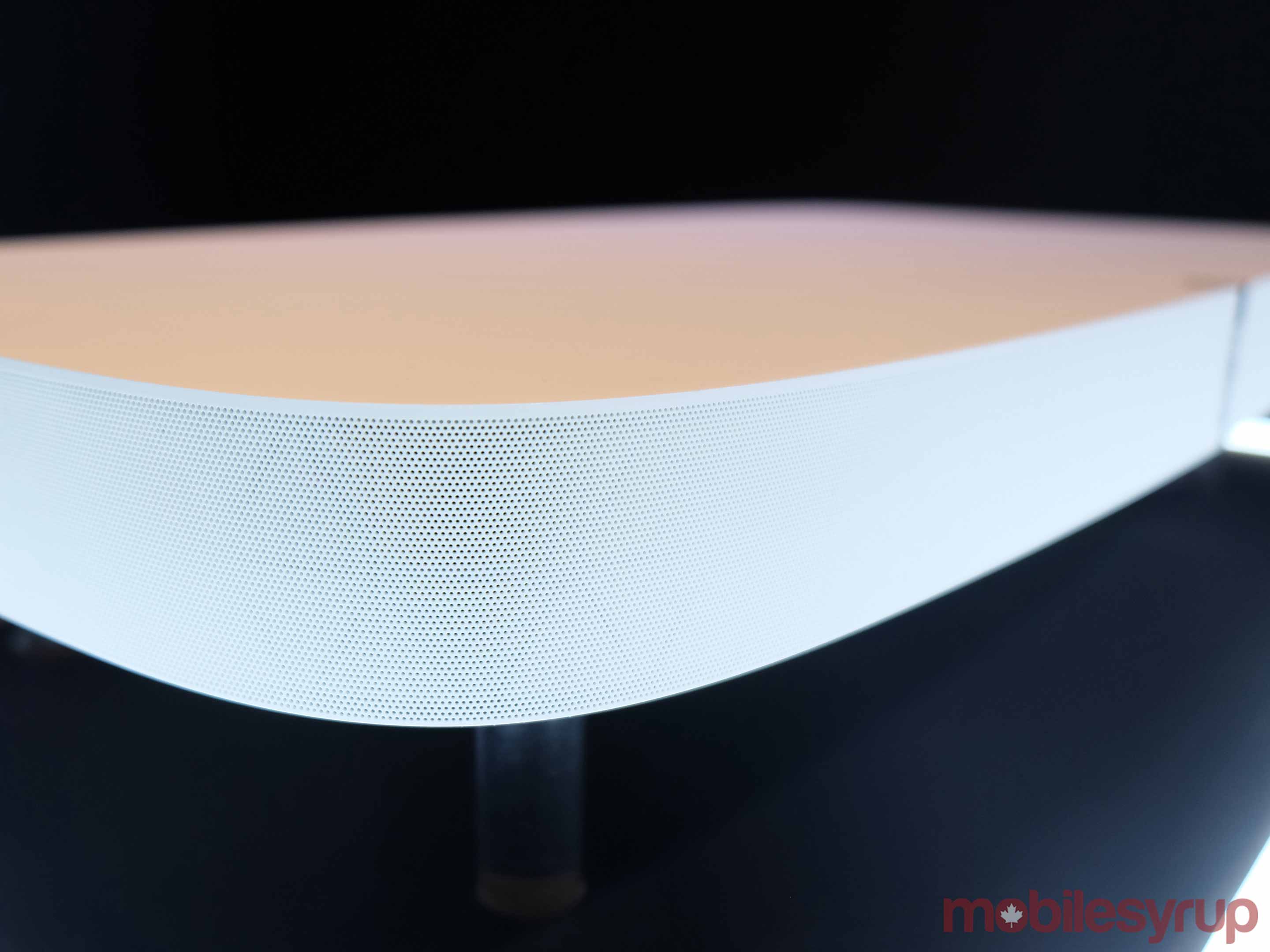
Sonos is making the Playbase available for pre-orders starting today for all registered Sonos users have a product and account. The price is $899.99 CAD ($699 USD), and the global launch, including Canada, has been confirmed for April 4th.
The Playbar is the same price, yet another indication of how Sonos views them both in its lineup. It comes down to what form factor you’re looking for.
MobileSyrup may earn a commission from purchases made via our links, which helps fund the journalism we provide free on our website. These links do not influence our editorial content. Support us here.

